
Discover the Enchanted Wonders of Preah Vihear Province
Explore the mystical beauty of Preah Vihear Province, where ancient temples, lush landscapes, and rich culture await your discovery in northern Cambodia.
Preah Vihear Province, nestled in the northern part of Cambodia, is a captivating blend of history, culture, and natural beauty. This region is home to the ancient Preah Vihear Temple, a UNESCO World Heritage site. Perched atop a 525-meter cliff in the Dângrêk Mountains, the temple offers breathtaking views of the surrounding countryside. Built in the 11th century, the temple is a remarkable example of Khmer architecture, with intricate carvings and grand staircases that tell stories of a bygone era. Beyond the temple, Preah Vihear Province is rich in natural attractions. The pristine forests and rolling hills are perfect for adventurous travelers who enjoy hiking and exploring. The Kulen Promtep Wildlife Sanctuary, one of the largest protected areas in Cambodia, is a haven for wildlife enthusiasts. Here, you can spot a variety of endangered species, including the Indochinese tiger and the Asian elephant. The local culture in Preah Vihear Province is vibrant and welcoming. Small villages dot the landscape, where you can experience traditional Cambodian life. Engage with local artisans, taste regional delicacies, and participate in traditional festivals. The warmth and hospitality of the people will make your visit even more memorable.
Local tips in Preah Vihear Province
- Visit the Preah Vihear Temple early in the morning to avoid the crowds and enjoy the serene atmosphere.
- Wear comfortable shoes and bring plenty of water if you plan to hike in the Kulen Promtep Wildlife Sanctuary.
- Respect local customs and traditions when visiting small villages. Ask for permission before taking photos of people.
- Hire a local guide to enhance your understanding of the historical significance and cultural nuances of the province.
- Check the weather forecast before your trip, as the region can be quite hot and humid, especially during the wet season.
Discover the Enchanted Wonders of Preah Vihear Province
Preah Vihear Province, nestled in the northern part of Cambodia, is a captivating blend of history, culture, and natural beauty. This region is home to the ancient Preah Vihear Temple, a UNESCO World Heritage site. Perched atop a 525-meter cliff in the Dângrêk Mountains, the temple offers breathtaking views of the surrounding countryside. Built in the 11th century, the temple is a remarkable example of Khmer architecture, with intricate carvings and grand staircases that tell stories of a bygone era. Beyond the temple, Preah Vihear Province is rich in natural attractions. The pristine forests and rolling hills are perfect for adventurous travelers who enjoy hiking and exploring. The Kulen Promtep Wildlife Sanctuary, one of the largest protected areas in Cambodia, is a haven for wildlife enthusiasts. Here, you can spot a variety of endangered species, including the Indochinese tiger and the Asian elephant. The local culture in Preah Vihear Province is vibrant and welcoming. Small villages dot the landscape, where you can experience traditional Cambodian life. Engage with local artisans, taste regional delicacies, and participate in traditional festivals. The warmth and hospitality of the people will make your visit even more memorable.
When is the best time to go to Preah Vihear Province?
Iconic landmarks you can’t miss
Prasat Preah Vihear
Explore the grandeur of Prasat Preah Vihear, a UNESCO World Heritage site in Cambodia, showcasing ancient Hindu architecture amidst breathtaking mountain views.

Koh Ker Temple
Explore the majestic Koh Ker Temple, an ancient Khmer treasure surrounded by lush jungles and rich history, perfect for adventurous travelers.

Preah Nimit Waterfall
Experience the serene beauty of Preah Nimit Waterfall, a must-visit natural wonder in the heart of Cambodia, perfect for relaxation and adventure.

Prasat Preah Khan of Kampong Svay
Explore the breathtaking Prasat Preah Khan of Kampong Svay, an archaeological gem showcasing the brilliance of the Khmer Empire's architecture and history.

Preah Khan Kampong Svay East Entrance Causeway
Explore the breathtaking Preah Khan Kampong Svay East Entrance Causeway, a historical gem of Khmer architecture in the heart of Cambodia's rich cultural heritage.

Tbeng Meanchey Mountain
Explore the breathtaking beauty of Tbeng Meanchey Mountain, a serene retreat in Cambodia, perfect for hiking, birdwatching, and immersing in nature.

ច្រកទ្វា ប្រាសាទព្រះវិហារ
Discover the breathtaking Temple of Preah Vihear, a UNESCO World Heritage Site in Cambodia, offering stunning views and rich historical significance.

Prasat Preah Vihear Gopura 3
Explore the majestic Prasat Preah Vihear Gopura 3, a historical landmark showcasing the rich heritage and architectural brilliance of ancient Khmer civilization.

Central Sanctuary
Explore the Central Sanctuary in Cambodia, a historical gem that showcases the rich heritage and architectural beauty of ancient civilizations.

Prasat Preah Vihear Gopura 4
Discover the ancient beauty of Prasat Preah Vihear Gopura 4, a UNESCO World Heritage Site showcasing stunning Khmer architecture and breathtaking views.

ជណ្ដើរបុរាណប្រាសាទព្រះវិហារ - Preah Vihea Temple Staircases
Explore the stunning Preah Vihear Temple Staircases, a UNESCO World Heritage site that combines breathtaking views with rich Khmer history.

Unmissable attractions to see
Prasat Sambor Prei Kuk
Discover the ancient Khmer temples of Prasat Sambor Prei Kuk, a UNESCO World Heritage Site, nestled in the serene Cambodian landscape.

Preah Nimit Waterfall
Experience the serene beauty of Preah Nimit Waterfall in Cambodia, a stunning natural wonder perfect for relaxation and adventure in lush surroundings.

Phnom Santuk
Discover the historical treasures and breathtaking views of Phnom Santuk, a must-visit destination in Krong Stueng Saen, Cambodia.

Prasat Preah Khan of Kampong Svay
Explore the ancient temples of Prasat Preah Khan of Kampong Svay, a hidden gem in Cambodia's archaeological landscape, rich in history and beauty.

Twin Stupas
Explore the Twin Stupas in Si Sa Ket, Thailand - a breathtaking historical landmark showcasing intricate architecture and rich Buddhist traditions.

ភ្នំត្បែងមានជ័យ
Explore the breathtaking Preah Vihear Temple, a UNESCO World Heritage site, where ancient history meets stunning landscapes in Cambodia.

Andet Temple
Explore the ancient wonders of Andet Temple, an archaeological site that showcases Cambodia's rich historical and cultural heritage amidst stunning natural beauty.

ទឹកធ្លាក់តាម៉ា - Tama Waterfall
Experience the breathtaking beauty of Tama Waterfall in Krong Preah Vihear, Cambodia, a must-visit natural attraction for every traveler.

Tbeng Meanchey Mountain
Discover the breathtaking landscapes and rich biodiversity of Tbeng Meanchey Mountain, a hidden gem in Cambodia that promises adventure and tranquility.

Independence Monument
Explore the Independence Monument in Krong Stueng Saen, a breathtaking tribute to Cambodia's rich history and vibrant culture.

ទឹកធ្លាក់ បេងកោង - Beng Koung Waterfall
Explore the serene beauty of Beng Koung Waterfall in Krong Preah Vihear, a natural wonder perfect for relaxation and adventure.

Tmatboey Community Managed Ecolodge
Explore the Tmatboey Community Managed Ecolodge in Cambodia for an unforgettable eco-friendly adventure in wildlife and local culture.

បឹងក្រញ៉ាក់
Explore the captivating ruins of Koh Ker, an ancient Khmer capital shrouded in jungle, rich in history and architectural marvels.

Kandol Sor Waterfall - ទឹកធ្លាក់ កណ្តុរស
Experience the natural beauty of Kandol Sor Waterfall in Cambodia, a hidden gem perfect for hiking, relaxation, and stunning photography.

ទំនប់ទឹកអូរស្វាយ
Explore the captivating charm of Sra'aem, a hidden gem in Cambodia offering rich culture, stunning landscapes, and historical treasures.

Essential places to dine
Arunras Restaurant
Discover authentic Cambodian dishes at Arunras Restaurant in Krong Stueng Saen – where flavor meets tradition.

Prey Pros Restaurant
Discover authentic Cambodian cuisine at Prey Pros Restaurant, where tradition meets flavor in a cozy atmosphere.
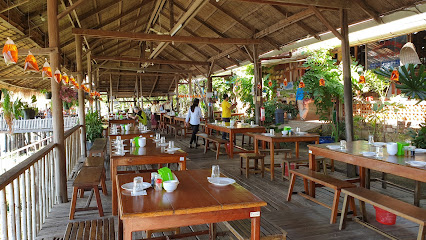
Phnom Tbaeng Restaurant
Experience authentic Cambodian flavors at Phnom Tbaeng Restaurant in Krong Preah Vihear—where every dish tells a story.

Moon Restaurant
Discover the essence of Cambodian cuisine at Moon Restaurant in Krong Preah Vihear – where tradition meets taste in every dish.

Lemy's Restaurant
Experience the essence of Cambodia at Lemy's Restaurant in Sra'aem, where authentic flavors meet warm hospitality.

Coconut Houseផ្ទះដូង
Discover authentic Cambodian cuisine at Coconut House in Krong Preah Vihear - where tropical charm meets culinary delight.

Restaurant Preah Vihear Derm Mean
Discover authentic Cambodian flavors at Restaurant Preah Vihear Derm Mean – a culinary treasure in Krong Preah Vihear.
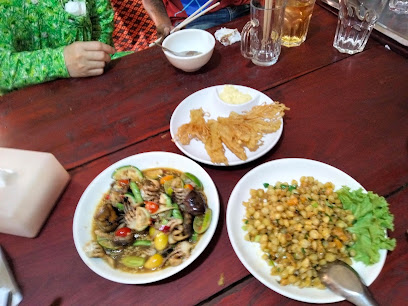
Kanika Restaurant (Cheb District)
Experience authentic Cambodian flavors at Kanika Restaurant in Cheb District—where every dish tells a story.

ខ្ចុះម្លប់ស្បូវស្រះឈូក
Experience authentic Khmer cuisine at this family-friendly gem in Krong Preah Vihear, perfect for creating lasting memories over delicious meals.

សែនសប្បាយ៩៩៩៩ Restaurant Beer
Savor authentic Khmer flavors at សែនសប្បាយ9999 Restaurant Beer in Krong Preah Vihear - where tradition meets taste.

Mlu Prey Restaurant
Discover authentic Cambodian flavors at Mlu Prey Restaurant in Krong Preah Vihear – where tradition meets taste in every dish.
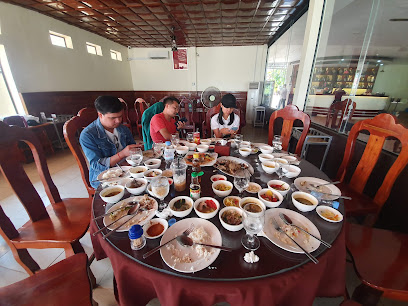
Vicha Café
Experience the heartwarming flavors of breakfast at Vicha Café in Phumi Môréal - where every bite is a delightful start to your day.

Kongkea Khmer Cuisine
Discover authentic Cambodian cuisine at Kongkea Khmer Cuisine in Krong Preah Vihear – a culinary journey through vibrant flavors.

BS Restaurant
Discover exquisite local cuisine and warm hospitality at BS Restaurant in Krong Preah Vihear - an essential stop for food lovers.

ជំនោរដងស្ទឹង
Discover authentic Khmer breakfast delights at ជំនោរដងស្ទឹង in Krong Preah Vihear - where every meal tells a story.

Markets, malls and hidden boutiques
AEON Mall Phnom Penh
Discover shopping, dining, and entertainment at AEON Mall Phnom Penh, a vibrant destination blending local culture with global brands.

Senteurs d'Angkor Workshop and Garden
Explore the enchanting Senteurs d'Angkor Workshop and Garden for authentic Cambodian gifts, handcrafted products, and a fragrant journey through local culture.

Sombai Cambodian Liqueur and souvenirs
Experience the unique flavors of Cambodia at Sombai, where handcrafted liqueurs and local souvenirs create unforgettable memories.
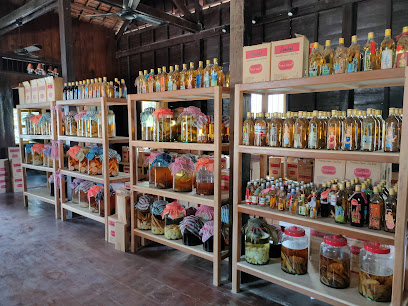
Prasat Preah Khan of Kampong Svay
Discover the enchanting ruins of Prasat Preah Khan of Kampong Svay, a historical landmark that unveils the grandeur of Cambodia's ancient Khmer Empire.

Preah Vihear Boutique Hotel
Discover the perfect blend of comfort, culture, and local charm at Preah Vihear Boutique Hotel in Sra'aem, Cambodia.

BeTreed Adventures
Discover the enchanting beauty of TaBos Village at BeTreed Adventures, where nature meets comfort in a tranquil retreat.

Senteurs d'Angkor (Phnom Penh)
Discover authentic Cambodian souvenirs at Senteurs d'Angkor, a vibrant gift shop near the National Museum, perfect for unique cultural treasures.

A.N.D
Discover the charm of Cambodian fashion at A.N.D, a boutique in Phnom Penh offering unique clothing and accessories with local flair.

ផ្សារ ហេងភា ស្រអែម
Discover the flavors and crafts of Cambodia at Heng Phea Market in Sra'aem, where local culture comes alive through vibrant stalls and delicious street food.

Preah Vihear Market.
Discover the vibrant Preah Vihear Market, a cultural gem in Sra'aem offering fresh produce, street food, and unique local crafts.

Shack Collective
Shop unique, handmade treasures at Shack Collective, a boutique in Phnom Penh showcasing local artisans and Cambodian culture.

Shop 676
Shop 676 in Krong Siem Reap offers a unique blend of local fashion and handmade gifts, perfect for tourists seeking authentic Cambodian items.

Weaves of Cambodia
Explore the vibrant heritage of Cambodian textiles at Weaves of Cambodia, a must-visit handicraft museum in Krong Preah Vihear, showcasing exquisite craftsmanship.
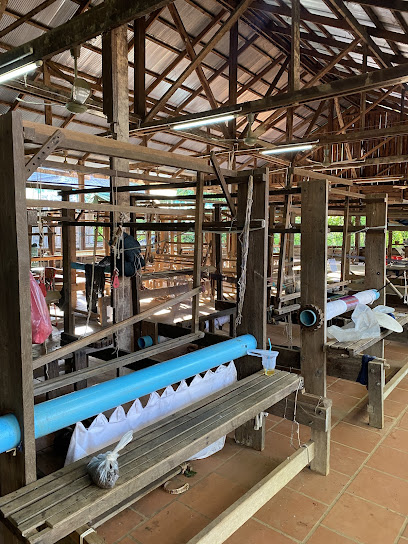
Branch of Metfone Preah Vihear
Experience local culture and modern shopping at Metfone Preah Vihear, a vibrant landmark in the heart of Krong Preah Vihear.

SLC ខ្ទឹមខ្មៅ
Explore SLC ខ្ទឹមខ្មៅ for a unique selection of home goods and authentic Cambodian treasures that will enhance your living space.

Essential bars & hidden hideouts
Eclipse Sky Bar
Experience breathtaking views and vibrant nightlife at Eclipse Sky Bar, Phnom Penh's premier rooftop bar and restaurant.

Le Moon Rooftop
Experience stunning views and vibrant nightlife at Le Moon Rooftop, Phnom Penh's premier bar and lounge destination.

The Angkor What? Bar
Discover the vibrant nightlife at The Angkor What? Bar in Siem Reap, where locals and travelers unite for unforgettable evenings filled with fun and great drinks.

Bouchon Wine Bar
Discover culinary excellence at Bouchon Wine Bar, where the essence of French dining meets a vibrant wine selection and live music in Phnom Penh.

Sora Bar
Experience luxury and breathtaking views at Sora Bar, Phnom Penh's premier sky-high destination for exquisite cocktails and vibrant nightlife.

ASANA OLD WOODEN HOUSE Cocktail Bar
Discover ASANA OLD WOODEN HOUSE in Siem Reap, where exquisite cocktails and Asian cuisine meet in a charming wooden setting.

Elephant Bar
Discover the lively ambiance and exquisite menu at Elephant Bar, Phnom Penh's premier destination for cocktails and relaxation.

Preah Vihear Boutique Hotel
Experience local charm and comfort at Preah Vihear Boutique Hotel in Sra'aem, your gateway to Cambodia's rich history and stunning landscapes.

Moon Restaurant
Discover the rich flavors of Cambodian cuisine at Moon Restaurant in Krong Preah Vihear, offering a delightful and authentic dining experience.

សែនសប្បាយ៩៩៩៩ Restaurant Beer
Experience the flavors of Cambodia at Sang Sabay 9999 Restaurant, where every meal is a celebration of local traditions and warm hospitality.

H-Cafe and Cocktail
Discover the lively atmosphere and refreshing cocktails at H-Cafe and Cocktail in Krong Preah Vihear, a must-visit bar for tourists.

Me Hel
Experience authentic Korean cuisine at Me Hel, where traditional flavors meet a welcoming atmosphere in Kampong Pranak.

ដាយម៉ែនញូវ
Experience the lively nightlife of Krong Preah Vihear at the vibrant bar, ដាយម៉ែនញូវ, where culture and entertainment meet.

សួនច្បារផ្កាឈូករដ្ឋ
Explore the stunning Orchid Garden in Sra'aem, a tranquil oasis filled with vibrant blooms and lush greenery, perfect for nature lovers and photographers.

ផ្ទះទាកាញ់៦៦៦៦ Restaurant and beer Gardent
Discover the rich flavors of Cambodia at ផ្ទះទាកាញ់៦៦666 Restaurant and Beer Garden, a must-visit for food lovers in Krong Preah Vihear.

Local Phrases about Preah Vihear Province
-
- Helloជំរាបសួស្តី
[chom reab suor] - Goodbyeលាតលេងលេង
[leat leang leang] - Yesបាទ
[baat] - Noទេ
[te] - Please/You're welcomeសូមជាក់
[sombok chak] - Thank youអរគុណ
[aokun] - Excuse me/Sorryសុំស្រលាញ់
[som srilanh] - How are you?អ្នកសរសរប៉ុស្ម៉េត
[nak sa sa bousamet] - Fine. And you?មានសរសរនិងអ្នកប៉ុស្ម៉េត?
[mean sa sa nung nak bousamet] - Do you speak English?តើអ្នកនិយាយភាសាអង់គ្លេសទេ?
[te nak nihay phasaa angkleh tee] - I don't understandខ្ញុំមិនទាន់យល់
[knhom min tanyol]
- Helloជំរាបសួស្តី
-
- I'd like to see the menu, pleaseខ្ញុំចង់មើលម៉ឺនុយសូម
[knhom chong moul menu som] - I don't eat meatខ្ញុំមិនទិញសត្វ
[knhom min tign sat] - Cheers!ជរុណ
[chourm] - I would like to pay, pleaseខ្ញុំចង់បង់ប្រាក់សូម
[knhom chong bang braik som]
- I'd like to see the menu, pleaseខ្ញុំចង់មើលម៉ឺនុយសូម
-
- Help!ជួយខ្ញុំ!
[chouy knhom] - Go away!ទៅចេញ!
[tov cherng] - Call the Police!ហាត់សមាគម!
[hat samakk] - Call a doctor!ហាត់វេជ្ជបណ្ឌ!
[hat vejjabnath] - I'm lostខ្ញុំភ្លើង
[knhom pleung] - I'm illខ្ញុំលោកលោក
[knhom lok lok]
- Help!ជួយខ្ញុំ!
-
- I'd like to buy...ខ្ញុំចង់ទិញ ...
[knhom chong tign ...] - I'm just lookingខ្ញុំសេចក្តីមើលប៉ុន្មាន
[knhom sechkdei moulnomun] - How much is it?តើវាតិបអី?
[te vatei] - That's too expensiveវាគឺគូលគិតអូនហេតុ
[vea koukoolkitoun heuth] - Can you lower the price?តើអ្នកអាចជាងតម្លៃបានមិន?
[te nak achnang toulai baan min]
- I'd like to buy...ខ្ញុំចង់ទិញ ...
-
- What time is it?វេលាបន្ទាប់គឺតម្លៃអី?
[veale bantabek kitamulai?] - It's one o'clockវាជាម៉ោងមួយ
[veachameung mouy] - Half past (10)កន្លះទុកដល់ (១០)
[knlah tukdol (sep)] - Morningព្រឹក
[prok] - Afternoonល្ងាច
[lengchai] - Eveningល្ងាច
[lengchai] - Yesterdayម្សិលមិញ
[sulmun] - Todayថ្ងៃនេះ
[tngaynheh] - Tomorrowថ្ងៃស្អែក
[tngaysaek] - 1១
[mouy] - 2២
[pii] - 3៣
[bei] - 4៤
[beu] - 5៥
[bram] - 6៦
[pram] - 7៧
[prae] - 8៨
[pae] - 9៩
[pau] - 10១០
[dop]
- What time is it?វេលាបន្ទាប់គឺតម្លៃអី?
-
- Where's a/the...?តើមាននៅណាទៅ...?
[te mean nov na taw?] - What's the address?អាសយដ្ឋវិខណ៌អី?
[asiet vikaknouei?] - Can you show me (on the map)?តើអ្នកអាចបង់បែនខ្ញុំបានមិន?
[te nak achnang bangbaen knhom ban min?] - When's the next (bus)?នៅពេលណាទិដ្ឋបន្ទាប់?
[nov phel na tud bantabek?] - A ticket (to ....)សែកបេតិដទៅ....
[saek betet taw...]
- Where's a/the...?តើមាននៅណាទៅ...?
History of Preah Vihear Province
-
Preah Vihear Province, located in northern Cambodia, is a region steeped in rich history and cultural heritage. Known for its majestic landscapes and ancient temples, the province has been a significant cultural and historical site for centuries. The most famous landmark is the Preah Vihear Temple, a UNESCO World Heritage site that offers breathtaking views and a glimpse into the region's storied past.
-
Constructed during the reigns of the Khmer kings Suryavarman I and Suryavarman II, the Preah Vihear Temple is a masterpiece of Khmer architecture. Perched on the edge of the Dângrêk Mountains, the temple is dedicated to the Hindu god Shiva and offers panoramic views of the surrounding plains. The temple complex is renowned for its intricate carvings and well-preserved structures, which reflect the architectural prowess of the Khmer Empire.
-
During the late 20th century, Preah Vihear Province was significantly affected by the Khmer Rouge regime. The region witnessed numerous conflicts and was one of the last strongholds of Khmer Rouge forces. The scars of this tumultuous period are still visible today, with remnants of landmines and other wartime artifacts serving as poignant reminders of the province's recent history.
-
The temple has been at the center of a long-standing territorial dispute between Cambodia and Thailand. Both nations have laid claim to the temple and the surrounding land, leading to several military confrontations over the years. The International Court of Justice ruled in favor of Cambodia in 1962, but tensions have flared intermittently since then, making the site both a symbol of national pride and a focal point of international diplomacy.
-
Preah Vihear Province is home to a vibrant tapestry of cultural traditions and festivals. One of the most significant events is the annual celebration in honor of the Preah Vihear Temple, attracting pilgrims and tourists from across the region. Traditional dance, music, and rituals are performed, showcasing the rich cultural heritage of the province. Additionally, local markets and crafts offer a glimpse into the daily lives and artisanal skills of the residents.
-
Beyond its historical sites, Preah Vihear Province boasts a wealth of natural beauty. The Kulen Promtep Wildlife Sanctuary, one of Cambodia's largest protected areas, is located here and is home to diverse flora and fauna. Ecotourism initiatives are gaining momentum, encouraging visitors to explore the province's forests, wetlands, and wildlife while promoting sustainable travel practices.
Preah Vihear Province Essentials
-
Preah Vihear Province is located in northern Cambodia. The nearest international airport is Siem Reap International Airport, approximately 200 kilometers away. From Siem Reap, you can take a taxi or a bus to the provincial capital, Tbeng Meanchey. The journey typically takes around 4 to 5 hours by road. Alternatively, there are domestic flights from Phnom Penh to Siem Reap, and then you can continue by road to Preah Vihear.
-
Transportation within Preah Vihear Province includes local taxis and motorbike taxis, known as 'motodops.' Rental cars and motorbikes are also available, offering flexibility to explore the region at your own pace. Public buses and minibuses connect Tbeng Meanchey with surrounding towns and villages. For a more local experience, consider renting a bicycle to explore the scenic countryside.
-
The official currency in Cambodia is the Cambodian Riel (KHR), though US Dollars (USD) are widely accepted. Credit cards are accepted in some hotels, restaurants, and shops in Tbeng Meanchey, but it is advisable to carry cash, especially in smaller establishments and rural areas. ATMs are available in Tbeng Meanchey, but it's wise to withdraw sufficient cash before venturing into more remote areas.
-
Preah Vihear Province is generally a safe destination for tourists. However, standard precautions should be taken. Avoid walking alone at night in unfamiliar areas and always keep an eye on your belongings in crowded places. There are no specific high-crime areas targeting tourists, but it's best to stay vigilant and aware of your surroundings. Exercise caution when exploring remote areas and always inform someone of your travel plans.
-
In case of an emergency, dial 117 for police assistance and 119 for medical emergencies. Tbeng Meanchey has a local police station and a hospital. It's recommended to have travel insurance that covers medical emergencies. For minor health issues, there are pharmacies in the town where you can purchase over-the-counter medications. It's also helpful to have a basic first-aid kit with you.
-
Fashion: Do dress modestly, especially when visiting religious sites. Avoid wearing revealing clothing. Religion: Do respect local customs and traditions. Always remove your shoes before entering temples. Public Transport: Do be respectful and give up your seat to elderly passengers. Don’t eat or drink on public transport. Greetings: Do greet people with a ‘sampeah,’ which involves placing your palms together in a prayer-like gesture. Eating & Drinking: Do try local delicacies and accept food offerings graciously. Don’t refuse hospitality, as it is considered impolite.
-
To experience Preah Vihear Province like a local, visit the local markets where you can buy fresh produce and traditional Cambodian goods. Engage with locals, as they are often friendly and willing to share stories about the region's history and culture. Don't miss visiting the Preah Vihear Temple, a UNESCO World Heritage Site, offering stunning views and a glimpse into the region's rich history. For a unique experience, consider participating in a homestay to immerse yourself in the local way of life.
Trending Landmarks in Preah Vihear Province
-
Prasat Preah Vihear
-
Koh Ker Temple
-
Preah Nimit Waterfall
-
Prasat Preah Khan of Kampong Svay
-
Preah Khan Kampong Svay East Entrance Causeway
-
Tbeng Meanchey Mountain
-
ច្រកទ្វា ប្រាសាទព្រះវិហារ
-
Prasat Preah Vihear Gopura 3
-
Central Sanctuary
-
Prasat Preah Vihear Gopura 4
-
ជណ្ដើរបុរាណប្រាសាទព្រះវិហារ - Preah Vihea Temple Staircases
Nearby Cities to Preah Vihear Province
-
Things To Do in Ubon Ratchathani
-
Things To Do in Champasak
-
Things To Do in Pakse
-
Things To Do in Battambang
-
Things To Do in Kratie
-
Things To Do in Phnom Penh
-
Things To Do in Savannakhet
-
Things To Do in Trat
-
Things To Do in Nakhon Ratchasima
-
Things To Do in Koh Kong
-
Things To Do in Buon Ma Thuot
-
Things To Do in Thakhek
-
Things To Do in Sihanoukville
-
Things To Do in Kampot
-
Things To Do in Kep







